UK Business Tax Year Dates & Deadlines for 2023/24
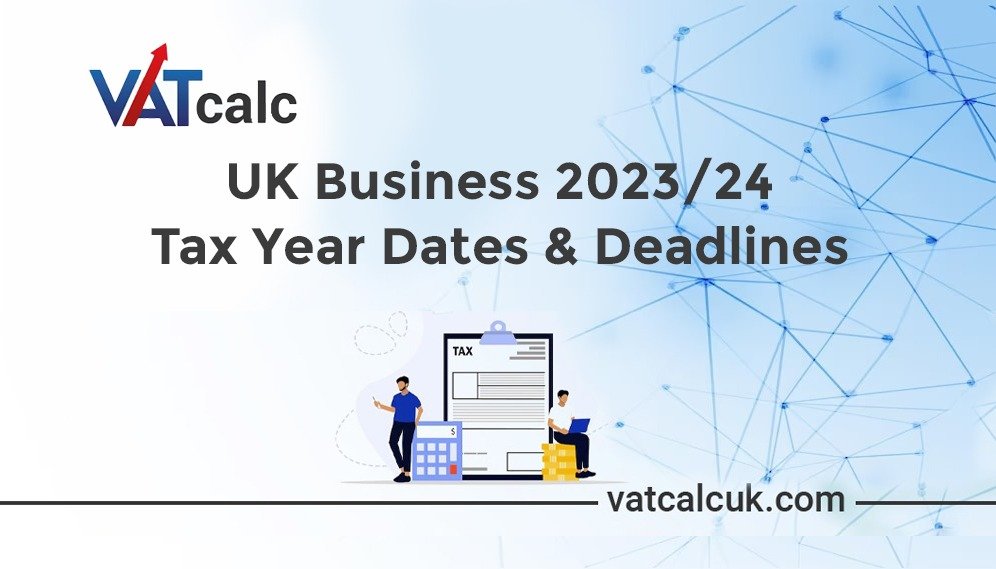
UK Business Tax Year Dates & Deadlines: Running a UK business is a thrilling rollercoaster, but navigating the tax landscape? That’s like navigating a labyrinth blindfolded, with deadlines lurking around every corner. Fear not, intrepid entrepreneurs! This blog is your map to conquering the 2023/24 tax year, armed with crucial dates, deadlines, and resources to turn you into a tax-savvy titan. Part 1: Charting the Tax Terrain – Know Your Dates, Know Your Forms Part 2: Conquering the Deadlines Maze – Deep Dive into Forms and Dates Part 3: VAT – The Quarterly Quest (and MTD for the Extra Challenge!) Part 4: Payroll Tax – The Monthly Mission (and P35 the Year-End Boss) Part 5: Resource Roundup – Your Tax Triumph Toolkit Bonus Tip: Embrace technology! MTD is here to stay, so consider upgrading your software and processes for a smoother tax future. Remember, this blog is your roadmap, not your GPS. For specific details and nuances, always consult official HMRC guidance How Does VAT (Value Added Tax) Work?
How does VAT (Value Added Tax) Work?
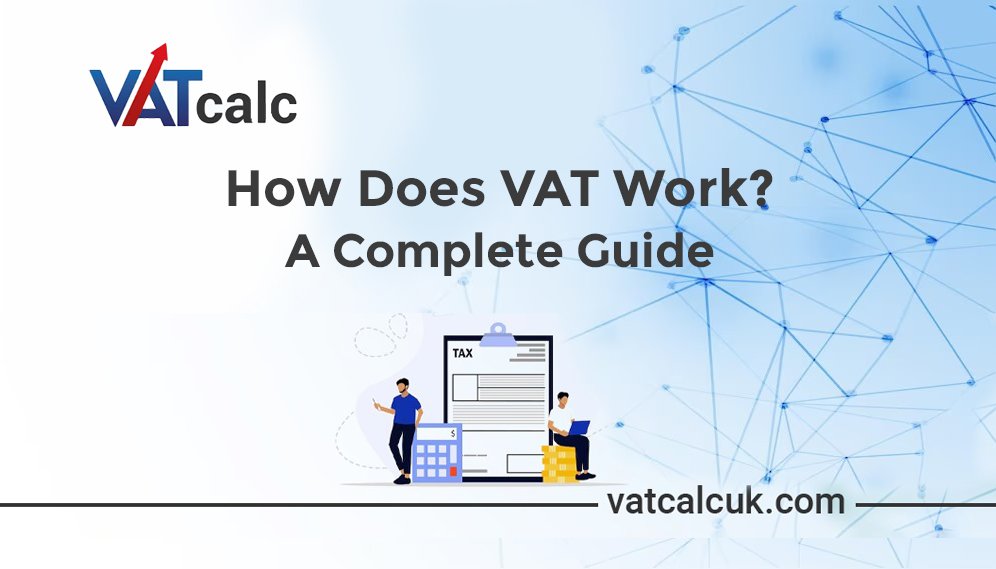
Understanding How VAT Works Introduction: Value-Added Tax is a cornerstone of fiscal policy globally, influencing economies and individuals alike. This consumption tax, applied at each stage of the production and distribution chain, plays a pivotal role in revenue generation and economic dynamics. In this comprehensive exploration, we will delve into the intricacies of Value Added Tax, examining its principles, its cascading impact on different stages of the supply chain, and the broader implications it holds for economies. Understanding Value Added Tax: Value-added tax operates as an indirect levy, systematically imposed at various stages of the production and distribution process. In stark contrast to direct taxes such as income tax, where individuals remit payments directly to the government, Value Added Tax is collected indirectly as products or services traverse the intricate web of the supply chain. How VAT Works – A Step-by-Step Guide: 1. Stage 1: Production/Manufacturing: Value Added Tax initiation takes place at the manufacturing juncture. As a product comes into existence, VAT is calculated based on the costs of materials, labor, and overhead expenses. The initial tax burden is borne by the manufacturer. 2. Stage 2: Distribution/Wholesale: Transitioning to the wholesale level, an additional layer of Value Added Tax is incorporated into the product’s cost. The wholesaler is obligated to remit this tax, albeit with the ability to reclaim the Value Added Tax paid during the manufacturing stage. 3. Stage 3: Retail: Moving to the retail phase, another increment of Value Added Tax is applied. The retailer shoulders this tax burden, yet gains the ability to reclaim the Value Added Tax paid to the wholesaler, creating a dynamic interplay within the supply chain. 4. Stage 4: Consumer Purchase: The ultimate consumer finalizes the process by paying the cumulative Value Added Tax at the retail price. It is essential to note that individuals do not possess the ability to reclaim Value Added Tax. The tax collected at this stage serves as the ultimate revenue for the government. Value-Added Tax Rates and Exemptions: Value Added Tax rates exhibit a spectrum of variability across countries and regions. Specific goods and services may be exempt or subjected to reduced rates, reflecting the ongoing effort to balance revenue generation with considerations for fairness and economic impact. Benefits of Value Added Tax: Value Added Tax is generally considered a fair and efficient tax system. Some of its benefits include: Challenges of VAT: Despite its benefits, VAT also presents some challenges: Tips for managing VAT: Here are some tips for businesses to manage VAT effectively: Understanding VAT is essential for businesses of all sizes. By following these tips and staying updated on the latest VAT regulations, businesses can ensure compliance and avoid penalties. Conclusion: In summary, a comprehensive understanding of how Value-Added Tax operates is imperative for businesses and consumers alike. It represents a multifaceted aspect of modern economies, shaping the production, distribution, and consumption of goods and services. Given the nuanced variations in VAT regulations, staying informed and seeking professional advice stand as crucial components for navigating this intricate taxation system successfully.
Understanding the VAT Threshold Changes in the UK for 2024
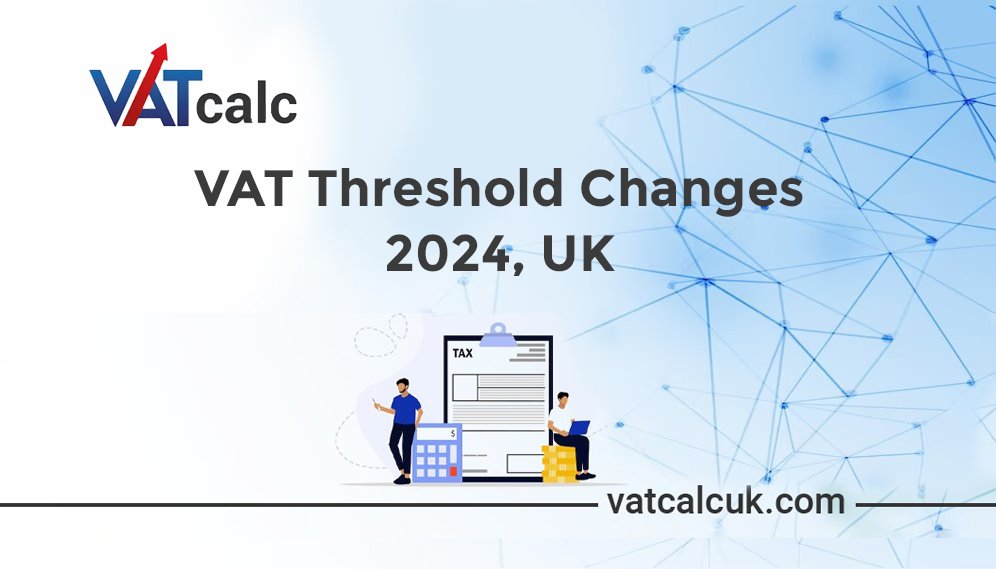
VAT Threshold Changes 2024: In the world of business and finance, staying informed about regulatory changes is crucial for the success of any enterprise. One such change that is set to impact businesses in the United Kingdom is the adjustment of the VAT threshold in 2024. The VAT (Value Added Tax) threshold is the level of taxable turnover above which businesses are required to register for and charge VAT on their sales. In this article, we will delve into the details of the VAT threshold changes in the UK for 2024 and explore the implications for businesses. As of now, the VAT threshold in the UK stands at £85,000, meaning that businesses with a taxable turnover above this threshold are required to register for VAT. However, it has been announced that the threshold will be subject to change in 2024. The adjustment of the VAT threshold can have significant implications for businesses, particularly for small and medium-sized enterprises (SMEs). For businesses currently below the threshold, the increase in the threshold could provide a welcome relief, allowing them to retain their competitive edge without the burden of VAT registration. On the other hand, businesses that are already above the threshold or are projected to surpass it shortly will need to adapt to the change and ensure compliance with the new regulations. Frozen Threshold until 2024 In the 2022 Autumn Budget, the government announced that the VAT threshold would be frozen at £85,000 until at least March 31, 2024. This means businesses will not have to register for VAT until their turnover exceeds this amount, even if it has increased due to inflation. What does this mean for small businesses? The frozen VAT threshold will provide some welcome relief for small businesses. It will mean that they will not have to incur the additional costs and administrative burden of VAT registration as soon as they would have otherwise. However, it is important to note that the frozen threshold is a temporary measure. The government has not made any announcements about what will happen to the threshold after March 31, 2024. Impact of the Frozen Threshold on Businesses The frozen VAT threshold will have a mixed impact on businesses: Positives: Negatives: Future of the VAT Threshold It is unclear what the government will do with the VAT threshold after March 31, 2024. However, there are a few possibilities: Ultimately, deciding what to do with the VAT threshold will be up to the government. However, they must take into account the needs of small businesses when making their decision. Conclusion The frozen VAT threshold is a positive development for small businesses. It will give them more time to grow and prepare for the additional costs of VAT registration. However, it is important to note that the frozen threshold is a temporary measure. Businesses should use this time to plan for the future and stay up-to-date with the latest information about the VAT threshold.
Understanding VAT Calculation in UK- Complete Guide 2023
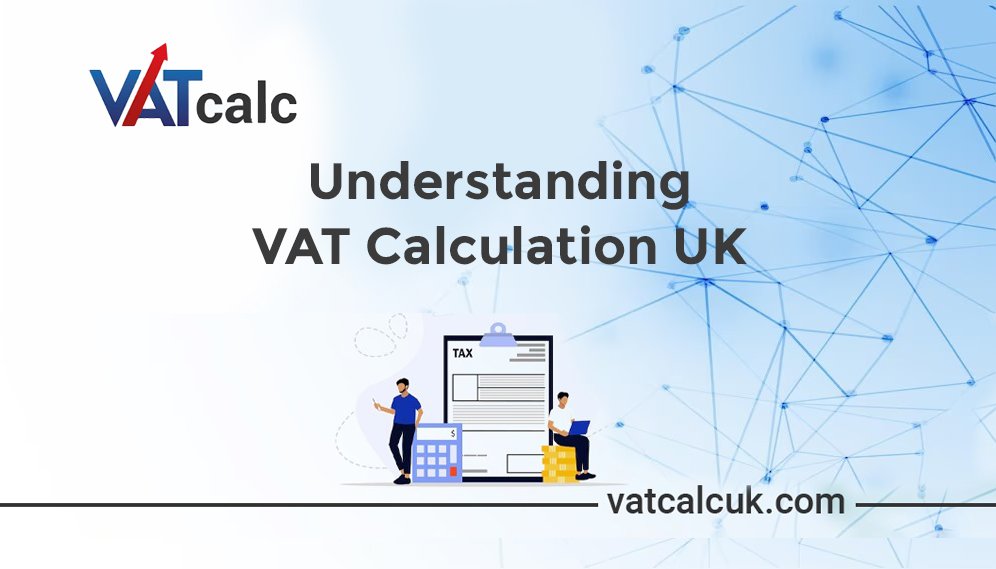
VAT Calculation in the UK: In the intricate landscape of business finances, Value Added Tax (VAT) serves as a cornerstone, particularly in the United Kingdom. Navigating the nuances of VAT calculation is paramount for businesses, ensuring compliance with tax regulations and maintaining financial stability. This comprehensive guide provides a detailed, step-by-step exploration of understanding VAT calculation in the UK. Section 1: Unraveling the Basics of VAT Understanding the fundamentals is pivotal for a robust grasp of VAT calculation: 1.1 What is VAT? VAT, or Value Added Tax, is a consumption tax levied on the value added to goods and services at each stage of production and distribution. In the UK, it plays a significant role in generating revenue for the government. Understanding its implications is crucial for businesses operating within the UK taxation system. 1.2 VAT Rates VAT rates are diverse and understanding them is essential for businesses: Section 2: VAT Registration and Thresholds Navigating the landscape of VAT registration and associated thresholds is crucial for businesses: 2.1 Mandatory vs. Voluntary Registration 2.2 VAT Thresholds Section 3: Input and Output Tax Understanding the dynamics of input and output tax is crucial for effective VAT management: 3.1 Input Tax 3.2 Output Tax Section 4: VAT Returns and Deadlines Effectively managing VAT returns is crucial for compliance and financial planning: 4.1 Frequency of VAT Returns 4.2 Submission Deadlines Section 5: VAT Schemes Exploring VAT schemes can provide businesses with strategic advantages: 5.1 Flat Rate Scheme 5.2 Cash Accounting Scheme Section 6: Intricacies of International Trade and VAT For businesses engaged in international trade, understanding VAT implications is paramount: 6.1 VAT on Imports and Exports 6.2 VAT Refunds for EU Transactions Post-Brexit Conclusion: Navigating the VAT Maze Summarize the key takeaways from this comprehensive guide: By demystifying the complexities of VAT calculation in the UK, this guide aims to empower businesses with the knowledge needed to navigate the tax landscape successfully. Remember, staying informed is the first step toward ensuring financial stability and compliance in the ever-evolving world of business taxation.
A Comprehensive Guide for Value Added Tax (VAT) 2023
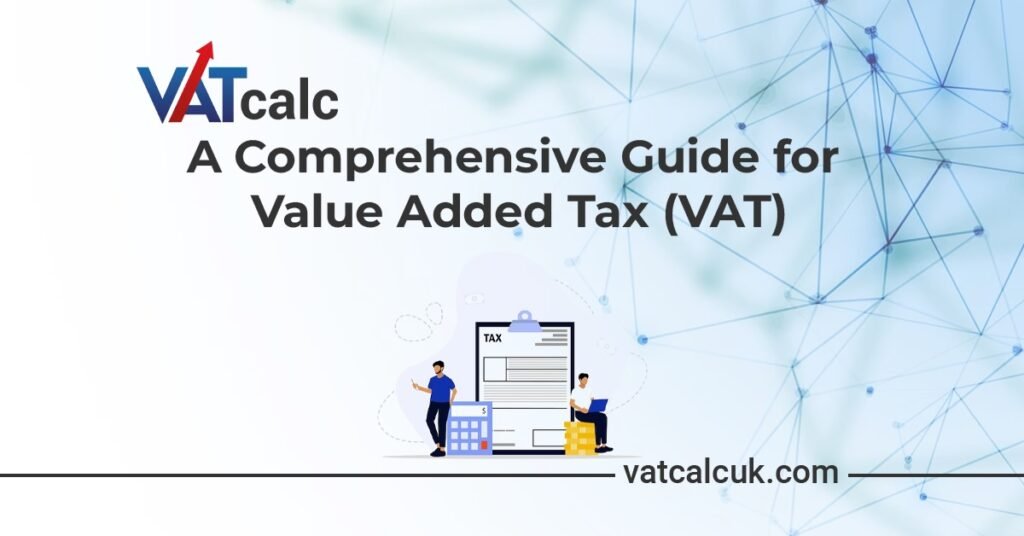
Value Added Tax: In the ever-evolving landscape of taxation, Value Added Tax (VAT) stands tall as a cornerstone that profoundly influences businesses on a global scale. Stepping into the realm of 2023 demands a heightened understanding of the intricate nuances of VAT, making it imperative for entrepreneurs, businesses, and individuals alike. This comprehensive guide goes beyond the surface, aiming to unravel the complexities surrounding VAT. By providing insights, updates, and actionable information, it equips readers to not only comprehend but adeptly navigate this critical aspect of financial management in the contemporary business environment. Table of Contents 1. Understanding Value Added Tax (VAT) 2. Importance of Value Added Tax in 2023 3. VAT Registration: Who Needs to Register? 4. VAT Calculation and Invoicing 5. VAT Returns and Filing 6. VAT Compliance Challenges in 2023 7. International VAT: Navigating Global Business 8. Changes and Updates in VAT Legislation 9. Impact of VAT on Small Businesses 10. VAT Audits: What You Need to Know 11. VAT and Technology: Trends and Innovations 12. Case Studies: Real-World Applications of VAT Compliance Conclusion As VAT regulations continue their dynamic evolution, staying abreast of these changes becomes not only a choice but a necessity for businesses to thrive in 2023 and beyond. This comprehensive guide, a beacon in the intricate landscape of taxation, has aimed to illuminate various facets of Value Added Tax. From fundamental principles to the latest trends and challenges, it equips businesses with the knowledge to approach VAT compliance with confidence. By ensuring financial stability and contributing to a robust, transparent economic landscape, businesses armed with this understanding can set the course for success. In the intricate world of taxation, knowledge isn’t just power; it’s a strategic advantage. To navigate the complexities of VAT in 2023, stay informed, stay compliant, and let your understanding of VAT be a cornerstone for unparalleled financial success. Advantages Of Online VAT Calculators For Businesses Latest VAT Changes 2023
Advantages of Online VAT Calculators for Businesses
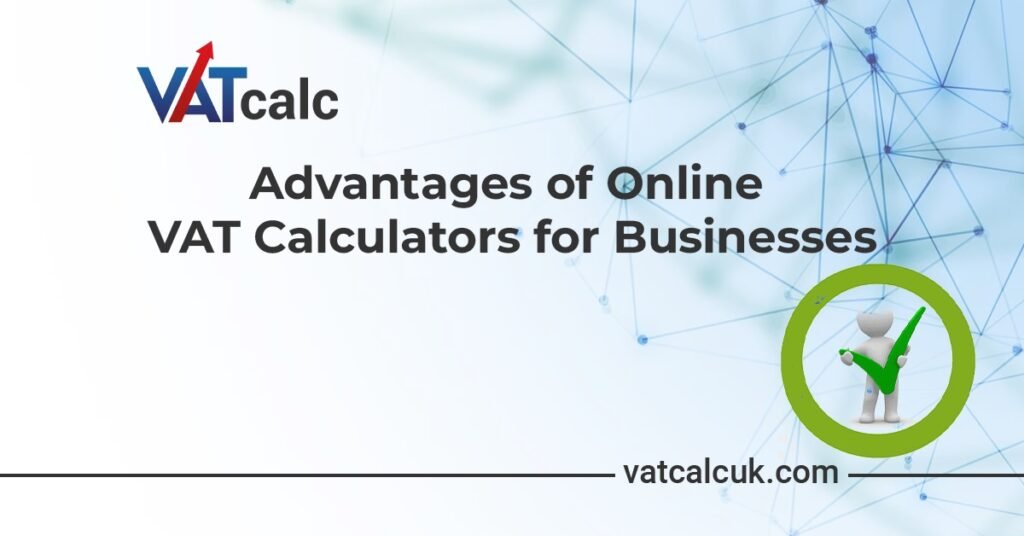
Online VAT Calculators for Businesses In the fast-paced world of business, staying ahead means embracing technology to streamline operations. One such tool that has become indispensable for businesses navigating the complexities of taxation is the Online VAT Calculator. This digital marvel offers a plethora of advantages, revolutionizing the way businesses handle Value Added Tax (VAT). Let’s delve into the key benefits that make Online VAT Calculators a game-changer for enterprises of all sizes. 1. Accuracy and Precision: Online VAT Calculators eliminate the risk of human error inherent in manual calculations. With automated processes, businesses can ensure accurate and precise VAT calculations, reducing the likelihood of miscalculations that could lead to financial discrepancies. 2. Time-Saving Efficiency: Time is money, and online VAT calculators are designed with this principle in mind. By automating the VAT calculation process, businesses can save valuable time that can be redirected towards core activities, strategic planning, and fostering growth. 3. Real-Time Compliance: Tax regulations are subject to change, and staying compliant is non-negotiable for businesses. Online VAT calculators are often updated in real-time to reflect the latest tax laws, ensuring that businesses stay on the right side of compliance without having to manually track and implement changes. 4. Enhanced Record Keeping: Digital VAT calculators typically come with features that facilitate efficient record-keeping. Businesses can easily generate reports, track transactions, and maintain comprehensive records for auditing purposes, providing a transparent and organized financial trail. 5. Increased Productivity: By automating repetitive tasks associated with VAT calculations, businesses can enhance overall productivity. Staff can focus on strategic decision-making and value-added activities, rather than spending excessive time on manual number crunching. 6. Financial Visibility: Online VAT calculators offer businesses greater financial visibility. With the ability to generate instant reports and insights, businesses can make informed decisions, optimize cash flow, and strategize for long-term financial success. 7. Ease of Use: Most online VAT calculators are designed with user-friendly interfaces. This makes them accessible to businesses of all sizes, including those without extensive financial expertise. The intuitive design ensures that businesses can harness the power of VAT calculations without a steep learning curve. 8. Cost Savings: Investing in an online VAT calculator is a cost-effective solution for businesses. The automation of tasks reduces the need for additional manpower for manual calculations, resulting in significant cost savings in the long run. 9. Global Accessibility: In an era of global business, having a tool that can be accessed from anywhere is invaluable. Online VAT calculators, being cloud-based, provide businesses with the flexibility to manage their VAT calculations from any location with internet access. 10. Scalability: As businesses grow, so do their VAT calculation needs. Online VAT calculators are scalable and can adapt to the evolving requirements of a growing enterprise, making them a sustainable and future-proof solution.
What is a Limited Cost Trader?
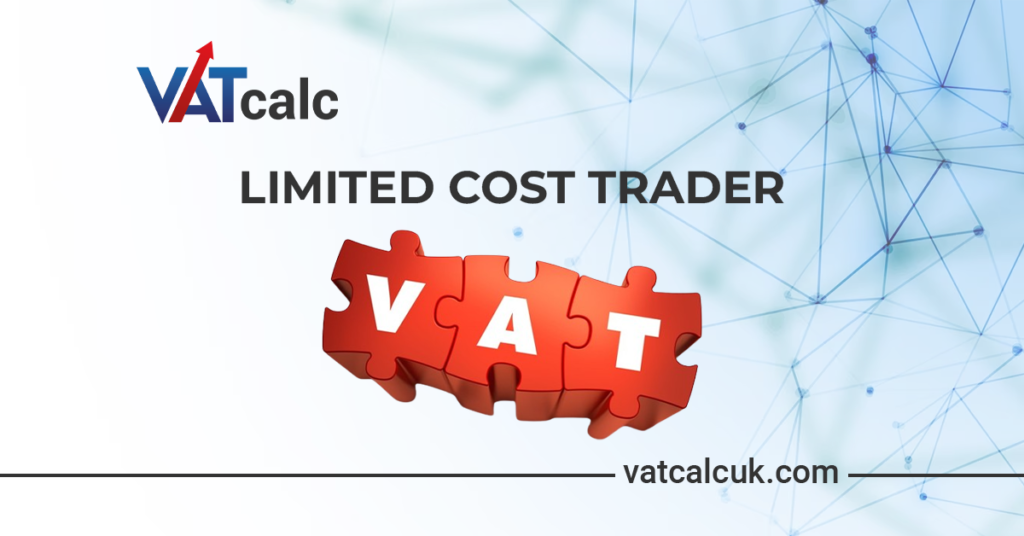
Limited Cost Trader A limited cost trader is defined by the UK’s HM Revenue and Customs (HMRC) as a business that spends less than 2% of its VAT flat rate turnover on goods (excluding services) over the period covered by a VAT return (which is typically quarterly). These businesses are eligible to use the Flat Rate VAT Scheme (FRS) with a flat rate of 16.5%. The FRS is typically used by small businesses that make primarily labor-based sales, such as: Benefits of Using the Flat Rate VAT Scheme as a Limited Cost Trader Using the FRS as a limited cost trader offers several benefits, including: How to Determine if You Are a Limited Cost Trader To determine if you qualify as a limited-cost trader, you need to calculate the percentage of your VAT flat rate turnover that you spend on goods. This can be done by following these steps: If your calculated percentage is less than 2%, you are considered a limited-cost trader and can use the FRS with the 16.5% flat rate. Important Considerations for Limited Cost Traders While the FRS offers several benefits for limited-cost traders, there are a few important considerations to keep in mind: Conclusion The Flat Rate VAT Scheme can be a valuable tool for limited-cost traders, offering simplified VAT calculations, reduced VAT payments, and improved cash flow. However, it is important to carefully consider whether the FRS is right for your business and to understand the potential implications before making the switch.
VAT Late Payment penalties in the UK in 2023

VAT Late Payment penalties in the UK in 2023 Value Added Tax (VAT) is a crucial aspect of business operations, as it is levied at every stage of the production and distribution process. As a result, it serves as a vital source of revenue for the UK government. However, ensuring timely VAT payments is paramount, not only for compliance with tax regulations but also for avoiding penalties. In the UK, the consequences of penalties can be severe, ranging from financial charges to potential legal action. Understanding the new VAT late payment penalty system and adhering to strict compliance guidelines are essential for businesses to navigate this complex tax landscape effectively. Understanding the VAT Penalty Structure The UK’s VAT penalty structure is designed to discourage late payment and encourage prompt adherence to tax obligations. The penalties for late payment are tiered, increasing in severity with the length of delay. First Late Payment Penalty For payments between 16 and 30 days overdue, a penalty of 2% of the outstanding VAT on day 15 is imposed. This penalty serves as an initial warning to taxpayers and encourages them to settle their dues without further delay. Second Late Payment Penalty If the payment remains unpaid after 31 days, a more substantial penalty is incurred. This second late payment penalty comprises two components: This incremental penalty structure aims to incentivize swift action and minimize the financial burden on taxpayers who make late payments. Default Surcharge In cases of persistent non-compliance, HMRC (Her Majesty’s Revenue and Customs) may impose a default surcharge, which is a more severe penalty intended to deter deliberate disregard for payment obligations. The default surcharge is calculated as a percentage of the unpaid VAT, with the rate increasing depending on the duration of the delay. Late Payment Interest In addition to penalties, late payment can also incur late payment interest, which is charged from the first day the payment is overdue until the day it is paid in full. This interest is calculated at the Bank of England base rate plus 2.5%, reflecting the cost of government borrowing resulting from delayed tax receipts. Consequences of Prolonged Non-Payment Failure to address late payment penalties and interest can lead to further consequences, including: HMRC may take enforcement action, such as issuing a court summons or seizing assets, to recover outstanding penalties. Prolonged non-payment can damage a business’s credit rating, making it more difficult to obtain loans and other forms of financing. Late payment of VAT can tarnish a business’s reputation and erode customer trust. Avoiding the Penalty Pitfall To avoid the financial and reputational repercussions of late payment, businesses should implement robust financial management practices and establish clear payment procedures. Here are some key strategies to consider: Conclusion In a nutshell, adopt proactive measures ensuring adherence to VAT regulations. Businesses can navigate the landscape minimizing the risk of penalties and maintaining financial stability. It is vitally important to understand that timely payment of is not only a legal obligation but also a sound financial practice that safeguards the health and reputation of your business.
Latest VAT changes 2023
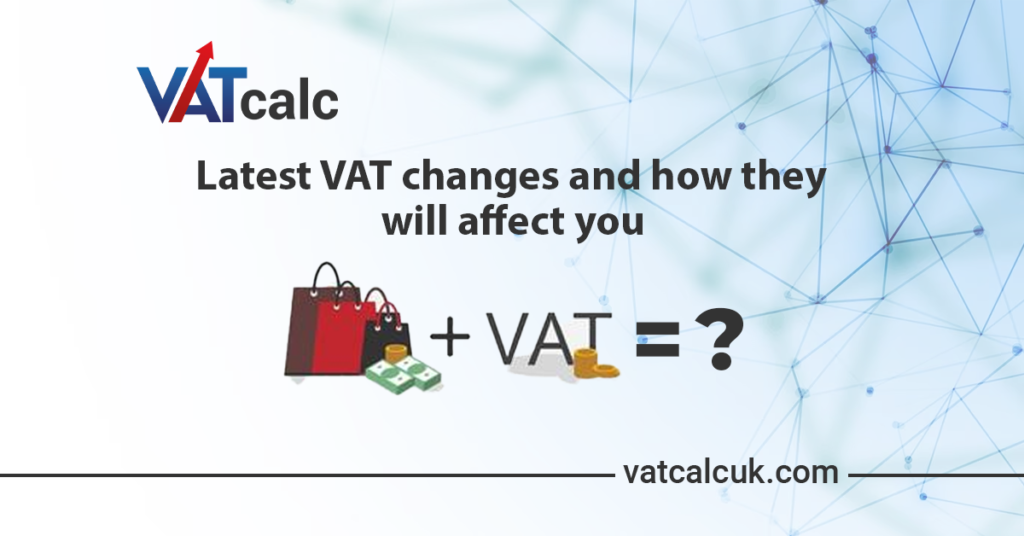
VAT Changes 2023: Introduction: As the global economic landscape continues to evolve, businesses are confronted with a myriad of challenges, particularly in the realm of taxation. In this exhaustive exploration, we delve into the profound VAT changes to Value Added Tax (VAT) regulations in 2023, dissecting each facet to equip businesses and individuals with a comprehensive understanding of the implications, strategies, and adaptations required in response to these modifications. 1. Rate Adjustments: The cornerstone of VAT lies in its rates, and as we step into 2023, several jurisdictions are poised for adjustments. These rate of VAT changes, often influenced by economic conditions and government fiscal policies, hold far-reaching consequences for businesses across industries. A detailed examination of the specific adjustments in key regions becomes imperative, as it not only impacts pricing structures but also necessitates a recalibration of financial projections, budgeting, and overall fiscal planning. Moreover, the ripple effects of rate adjustments extend beyond immediate financial considerations. They can influence consumer behavior, and supply chain dynamics, and even impact international trade. An in-depth analysis of historical trends and an understanding of the economic rationale behind these adjustments are crucial for businesses to not only comply but also to strategize effectively in the face of a shifting VAT landscape. 2. Digital Services Taxation: The digital revolution has transformed the business landscape, and tax authorities worldwide are grappling with the challenge of adapting tax frameworks to this new reality. In 2023, the expansion of VAT to include a broader spectrum of digital services represents a paradigm shift in how governments approach taxation in the digital economy. Businesses engaged in the provision of digital services now find themselves navigating uncharted waters, with implications extending to product pricing, market positioning, and operational frameworks. The implementation of mechanisms to track and report digital transactions, compliance with cross-border VAT regulations, and the potential reevaluation of business models are critical considerations. Additionally, the impact on smaller enterprises and startups in the digital space underscores the need for a nuanced understanding of these VAT changes. 3. Cross-Border Transactions: For businesses with international operations, cross-border transactions are a vital component of their operational paradigm. The VAT changes in 2023 introduce a layer of complexity to these transactions, necessitating a reevaluation of import/export strategies, customs compliance, and supply chain logistics. The evolving VAT landscape prompts businesses to assess the impact on their global operations, with considerations ranging from tariff implications to potential disruptions in the flow of goods and services. Collaborating with international tax experts and staying informed about changes in VAT protocols across borders is indispensable for businesses seeking to optimize their cross-border strategies while maintaining compliance. 4. Compliance and Reporting Requirements: VAT compliance has always been an intricate dance between businesses and regulatory bodies, and the focus on accurate reporting continues to intensify. The 2023 changes bring forth nuanced alterations to reporting requirements, compelling businesses to not only update their financial systems but to foster a culture of compliance within their organizations. Detailed record-keeping, real-time reporting capabilities, and a proactive approach to compliance become non-negotiable elements of a robust VAT strategy. Businesses must invest in technologies that facilitate seamless compliance, ensuring that they not only meet regulatory standards but also position themselves to adapt swiftly to any future changes. Failure to do so may result in financial penalties, operational disruptions, and reputational damage. 5. Industry-Specific Changes: The impact of VAT changes is not uniform across industries. In 2023, certain sectors will witness targeted adjustments tailored to address industry-specific challenges and dynamics. A granular analysis of these changes is paramount for businesses operating within these sectors, as they strive not only to comply but to capitalize on opportunities presented by the evolving VAT landscape. Understanding the industry-specific nuances of VAT changes is not only essential for compliance but also for strategic decision-making. Businesses that proactively engage with these changes, tailoring their strategies to align with industry dynamics, will be better positioned to navigate the evolving VAT landscape. Conclusion: In conclusion, the latest VAT changes in 2023 represent a multifaceted challenge for businesses across the globe. Navigating this complex landscape requires not only compliance but a strategic, forward-thinking approach. Businesses must invest in staying informed, leveraging technology for seamless compliance, and seeking expert counsel to interpret the nuances of these changes. Adaptability is key. The ability to pivot business strategies, recalibrate financial models, and foster a culture of compliance will define the success of businesses in the face of VAT changes. The global interconnectedness of economies underscores the importance of a holistic approach, considering not only local changes but also the ripple effects across borders. By mastering the intricacies of the evolving VAT landscape, businesses can transform challenges into opportunities. This comprehensive understanding empowers them not only to weather the storms of regulatory change but to emerge stronger, more resilient, and strategically positioned in a dynamic global market. Stay informed, stay adaptive, and thrive in the ever-evolving world of VAT.
How to submit a VAT Return
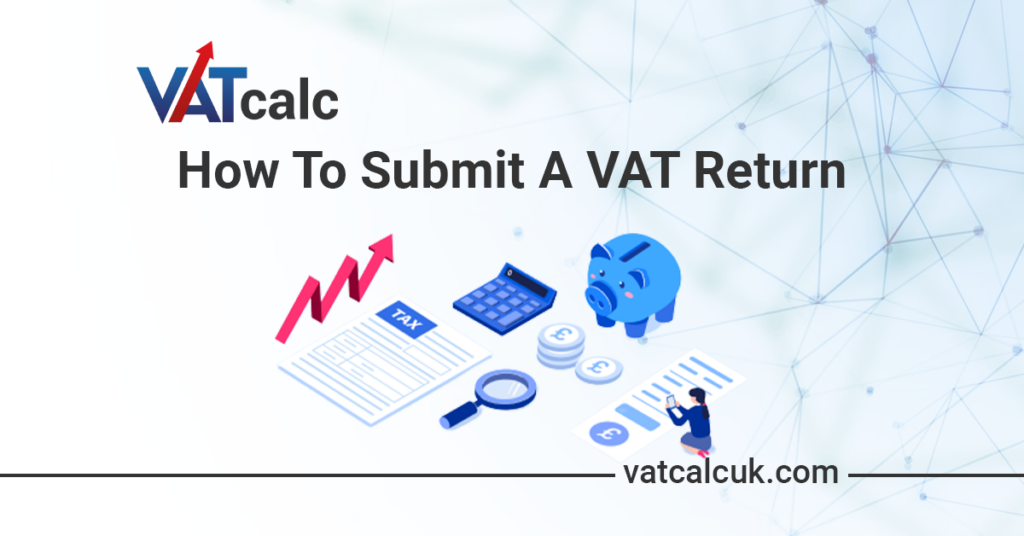
The UK government imposes VAT on the purchase of a variety of goods and services. The businesses registered for VAT are subject to various requirements, such as regularly maintaining records, calculating, reporting, and paying their liabilities. Therefore, (VAT) return indicates the amount payable to HMRC. Thus, every business is required to submit a (VAT) return to HMRC after completing an accounting period. What is VAT return? A (VAT) return is a form that determines the amount of tax paid to HMRC by a registered business. After calculating the tax input and output, companies must submit a (VAT) return every three months. These returns are distinct from the yearly tax returns filed by small businesses, where the tax depends on profits. Most companies typically submit for VAT returns a year, after every three months. However, if your business is part of any accounting scheme, you must submit one return annually. Methods to submit a VAT Return in the UK The UK tax system has become one of the most digital systems in the world. HMRC has significantly driven to get everyone online to streamline and enhance the taxation system. Therefore, HMRC introduced the Making Tax Digital app for VAT-registered businesses whose annual turnover is more than 85,000 euros to submit their VAT returns. The following are the methods for submitting it; 1. Accounting software-MTD compatible MTD-compatible software is primarily used to keep records and submit VAT returns. Once you sign up for Making Tax Digital, you must find compatible accounting software for further processing. It makes it easier for the business owner to manage their tax online. 2. Appointing a consultant HMRC also allows you to hire a consultant or tax adviser to manage your tax returns. He is called the trusted helper who can be your friend, relative, or professional accountant. Thus, he will review all your tax updates with HMRC on your behalf. 3. VAT online accounts Businesses can also use VAT online accounts if they are part of online accounting schemes. There is an entirely different procedure for companies that are exempt from MTD. Therefore, they can use the online HMRC website to submit their VAT returns. What is the VAT return due date? VAT returns’ due dates depend entirely on the accounting period of a business. It is one month and seven days after completing an accounting period. Most companies file their VAT returns quarterly, while others opt for monthly payments, depending upon their frequent delays in the past. However, some prefer annual accounting schemes. The following are the due dates of returns if they choose monthly, quarterly, or annual accounting schemes. 1. Quarterly payments If you prefer quarterly returns in the UK, you must submit them one month and seven days following the end of the quarter. For instance, if your quarter ends on 30 April 2023, the due date for paying VAT to HMRC will be 7th June 2023. 2. Monthly payments If any registered business in the UK has frequently missed deadlines, HMRC allows them to pay VAT bills every month. Thus, if their accounting period ends on 31 December 2023, they are liable to submit vat returns on 7 February 2023. Therefore, they are required to pay after one month and seven days of their payment period. 3. Annually payments Some enterprises use annual accounting schemes to pay one VAT per year against four regular VAT returns. Such businesses are required to submit their VAT return two months after the accounting period. For instance, their accounting year ends on 5 April 2023; their deadline for submitting a VAT return will be 5 June 2023. What happens if I miss the deadline for returns? HMRC enacted new rules for the accounting year 2023 for the late submission of VAT returns. This system works on a point basis, where you receive one point for each late return. Once your business reaches the penalty threshold, you will be charged a fine of £200. You will have to pay the same penalty on subsequent late returns. The exciting thing is that your points can reset to zero if you file all the unpaid returns during your compliance period. Therefore, businesses are required to update their returns. Submission Penalty threshold Period of compliance Annually 2 24 months Quarterly 4 12 months Monthly 5 Six months Can I submit a VAT return on the 7th? Every business must submit VAT returns after one month and seven days of their accounting period. Therefore, you can send your returns on the 7th day to HMRC. As a result, your record will update, and you may not be charged with any penalty. FAQs Q.1 Can I submit a VAT Return manually? You can only file returns manually by post or any other method if you are exempt from the list of Making Tax Digital. Moreover, you can submit manually due to a lack of access to the internet or age restriction. Q.2 Can I submit a VAT return without the software? As per the recent change in April 2022, businesses cannot submit a VAT Return through their online accounts. They need MTD-compatible software to file VAT returns to HMRC unless they are exempt from the MTD threshold. Q.3 How do I file my VAT return online? There is a straightforward procedure to file a VAT return online. You only need the VAT number and an online account to file a value-added tax return using HMRC’s free online services.
